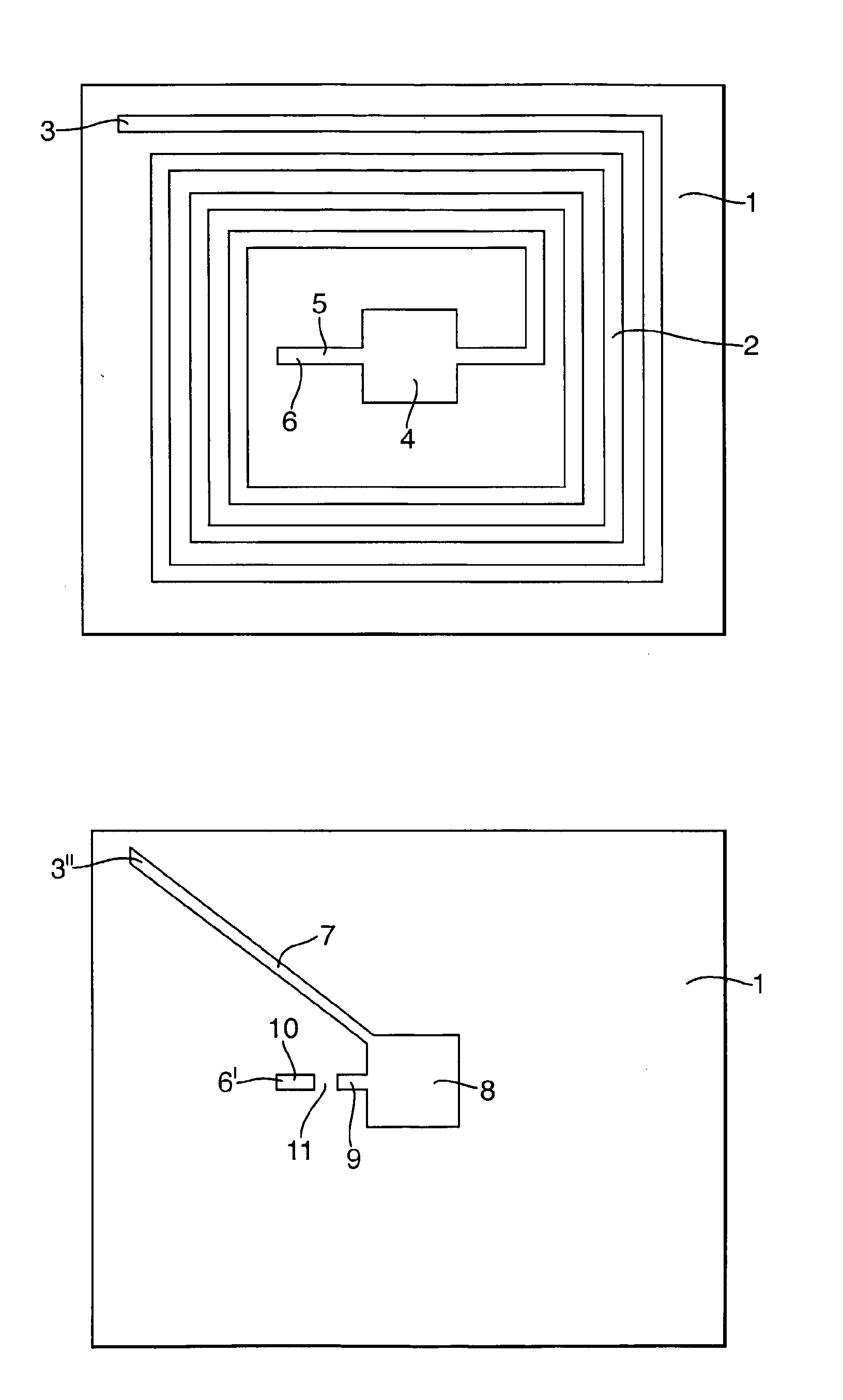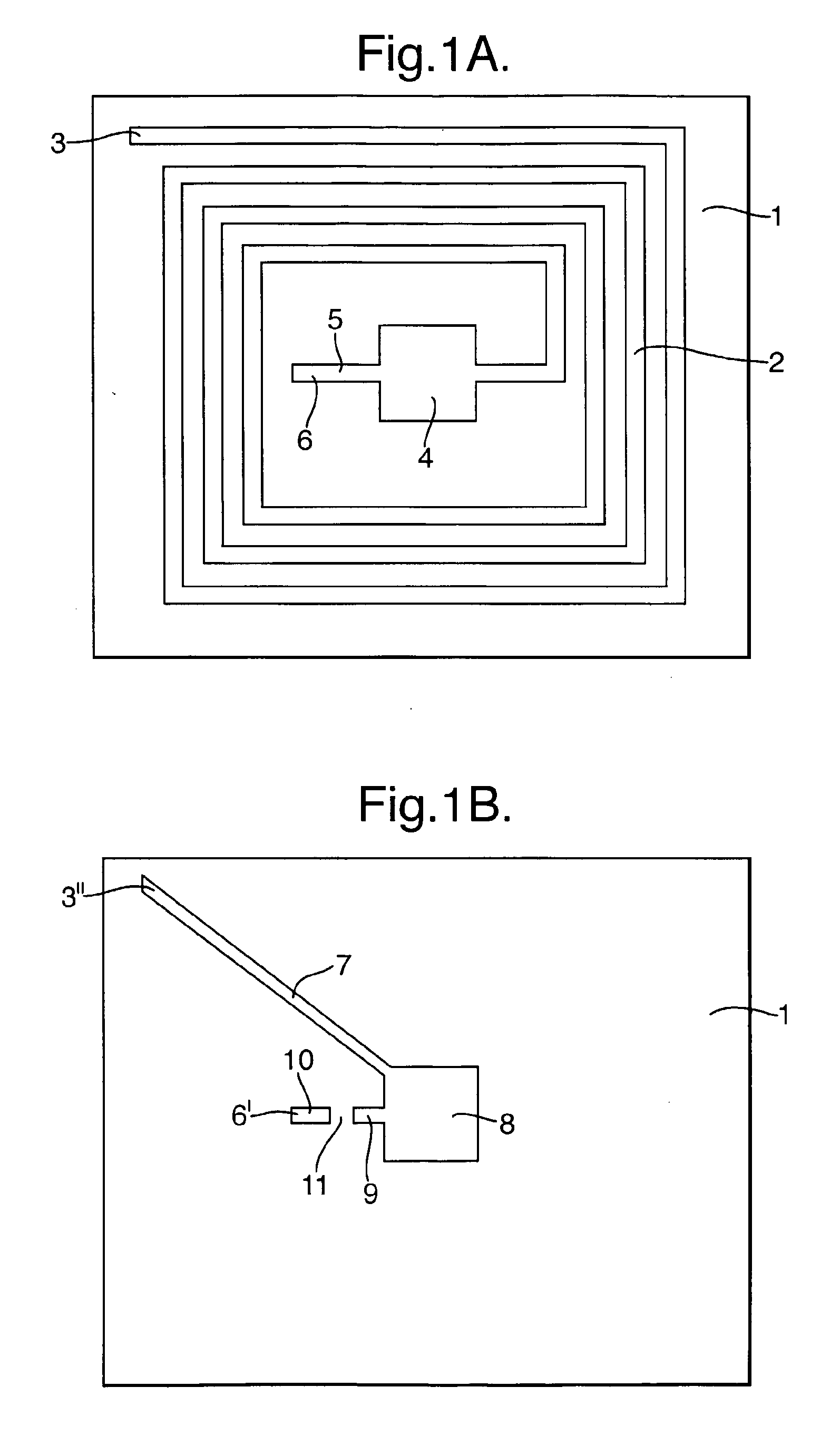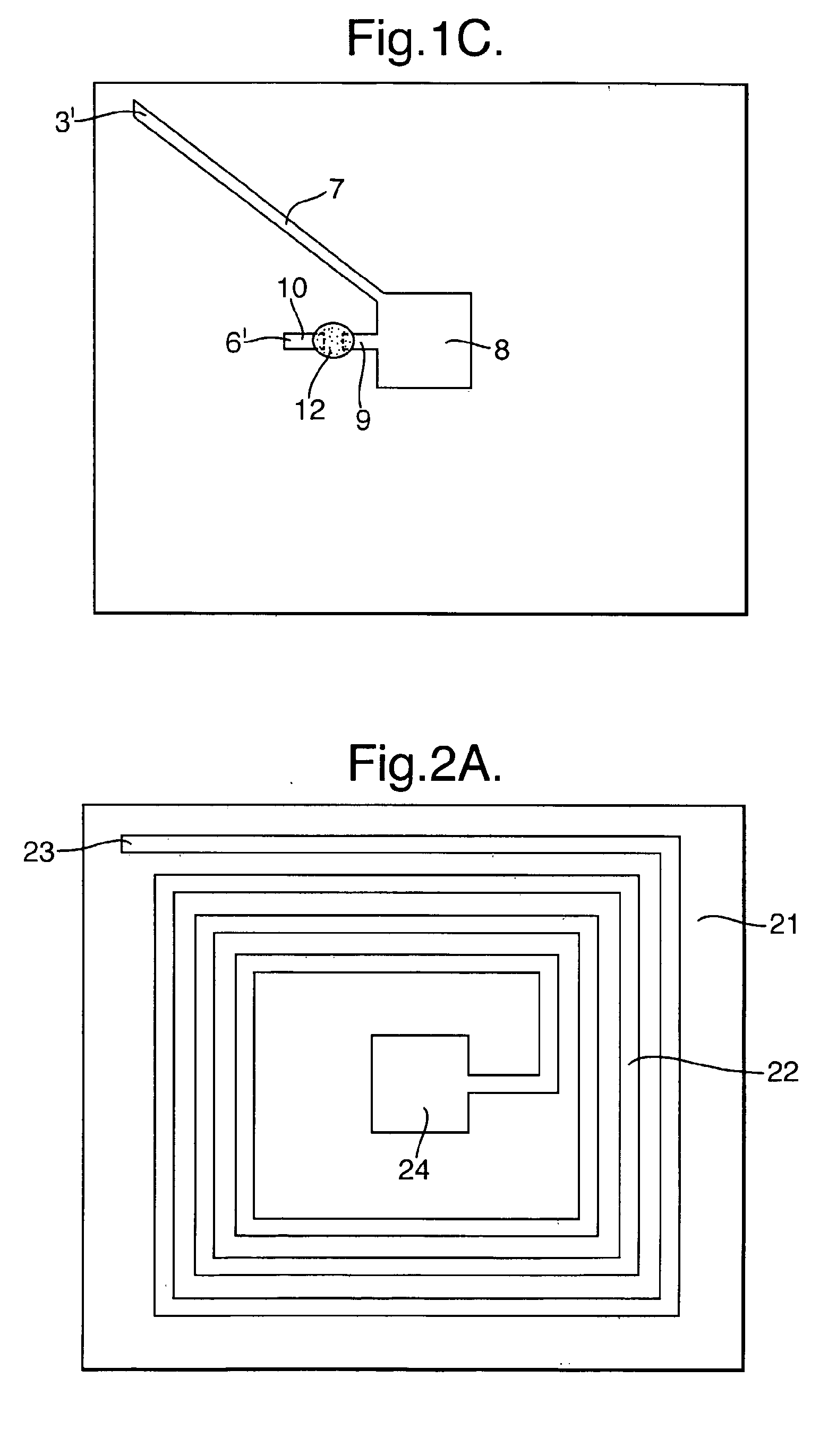Detunable Rf Tags
a technology of rf tags and rf fuses, applied in the field of rf tags, can solve the problems of unreliable method of forming fuse fuse, many tags are either shorted during the manufacturing process or fail to blow, and achieve the effect of cheap manufacturing
- Summary
- Abstract
- Description
- Claims
- Application Information
AI Technical Summary
Benefits of technology
Problems solved by technology
Method used
Image
Examples
example 1
[0086] A tag was constructed in the form shown in FIGS. 1A to 1C. The metal tracks were of copper deposited by electroless plating and thickened by electroplating. The circuits on the two sides were connected by crimping at point 3 / 3′ and the contact hole 6 / 6′ was through-plated by the process used to print the metal tracks.
[0087] The switch composition 11 was formulated from an aqueous ink (Coates Aqualam screen print varnish) containing 30 weight percent of nickel flake having a sieve size −325 mesh (US standard mesh) and a mean particle size of 30 microns and 0.4 microns thick, supplied by Novamet. The switch composition was dropped onto the substrate and cured with UV light. The tag was connected to a Hewlett Packard 4192A LF impedance analyzer and tested for impedance response to an applied signal over the frequency range 7.5 to 9 MHz The resulting trace is shown at curve 41 in FIG. 3. This tag was found to trigger the alarm at a standard detector gate operating on a swept fre...
example 2
[0089] The tag was constructed as in Example 1. The switch composition 11 was formulated from a UV curing ink (Acheson PM025) containing 30 weight percent of the same nickel flake in example 1. The switch composition was dropped onto the substrate and cured with UV light. The testing was repeated and produced a similar trace to curve 41 in FIG. 3. This tag was found to trigger the alarm at the standard detector gate in Example 1. The tag was then passed over the tag blower used in Example 1. This resulted in a trace comparable to curve 42 in FIG. 3. The blown tag no longer triggered the alarm at a standard detector gate
example 3
[0090] The tag was constructed as in Example 1. The switch composition 11 was formulated from a solvent-containing ink (Polyplast PY made by Sericol) containing 10 weight percent of the same nickel flake in Example 1. The switch composition was dropped onto the substrate and cured with hot air drying. The testing was repeated and produced a similar trace to curve 41 in FIG. 3. This tag was found to trigger the alarm at the standard detector gate in Example 1. The tag was then passed over the tag blower used in Example 1. This resulted in a trace comparable to curve 42 in FIG. 3. The blown tag no longer triggered the alarm at a standard detector gate
PUM
 Login to View More
Login to View More Abstract
Description
Claims
Application Information
 Login to View More
Login to View More - R&D
- Intellectual Property
- Life Sciences
- Materials
- Tech Scout
- Unparalleled Data Quality
- Higher Quality Content
- 60% Fewer Hallucinations
Browse by: Latest US Patents, China's latest patents, Technical Efficacy Thesaurus, Application Domain, Technology Topic, Popular Technical Reports.
© 2025 PatSnap. All rights reserved.Legal|Privacy policy|Modern Slavery Act Transparency Statement|Sitemap|About US| Contact US: help@patsnap.com



